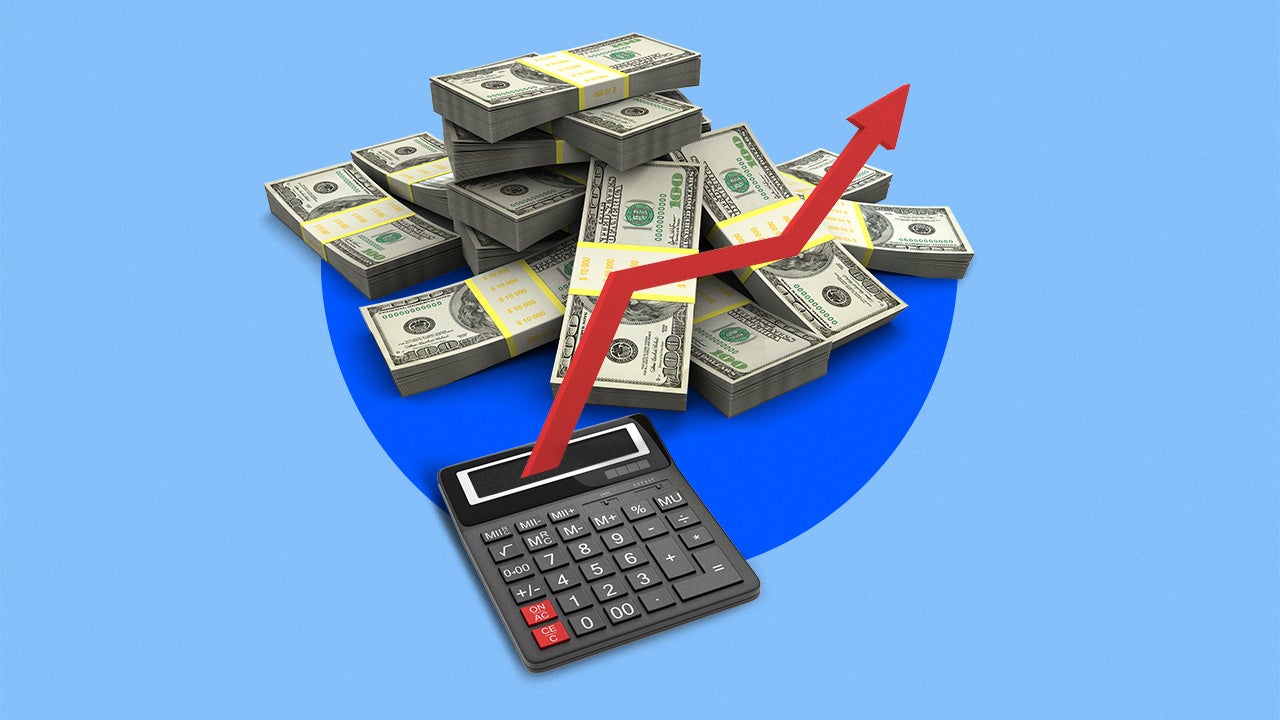The 15 largest banks in the US

The Bankrate promise
At Bankrate we strive to help you make smarter financial decisions. While we adhere to strict , this post may contain references to products from our partners. Here's an explanation for .
The 15 largest banks in the United States hold a combined total of around $12.95 trillion in assets as of Dec. 31, 2023.
Every so often there are changes to this exclusive club of top banks in the U.S. Larger banks trade places with one another and smaller banks drop out, replaced by faster-growing rivals. Mergers and acquisitions also might play a part in this.
Or a bank failure could cause consolidation of the largest banks in the U.S., like on May 1 when JPMorgan Chase assumed all of First Republic Bank’s deposits and nearly all of its assets. First Republic was the 14th largest bank, based on consolidated assets, as of March 31, 2023.
First Republic was the second-largest bank failure since Washington Mutual in 2008, which JPMorgan Chase also acquired.
Here are the biggest banks in the U.S. by consolidated assets, according to the latest numbers from the Federal Reserve.
| RANK | BANK NAME | TOTAL ASSETS | PREVIOUS RANK |
|---|---|---|---|
| 1 | JPMorgan Chase | $3.40 trillion | 1 |
| 2 | Bank of America | $2.54 trillion | 2 |
| 3 | Wells Fargo | $1.73 trillion | 4 |
| 4 | Citigroup | $1.68 trillion | 3 |
| 5 | U.S. Bancorp | $650.7 billion | 5 |
| 6 | PNC Financial Services | $557.5 billion | 6 |
| 7 | Truist Bank | $527.5 billion | 8 |
| 8 | Goldman Sachs | $521.1 billion | 7 |
| 9 | Capital One Financial | $475.6 billion | 9 |
| 10 | TD Group US Holdings | $367.2 billion | 10 |
| 11 | Bank of New York Mellon | $332.5 billion | 11 |
| 12 | State Street | $293.2 billion | 12 |
| 13 | BMO | $265.7 billion | 13 |
| 14 | Citizens Financial | $221.8 billion | 14 |
| 15 | First Citizens Bank | $213.8 billion | 15 |
1. JPMorgan Chase
Chase Bank is the consumer banking division of JPMorgan Chase. It currently has more than 4,700 branches and more than 16,000 ATMs.
Chase has branches in all of the 48 states in the continental U.S. and has more branches than any other bank in the U.S.
Read Bankrate’s review of Chase Bank.
- Assets: $3.40 trillion
- Headquarters: New York
2. Bank of America
Bank of America serves about 68 million consumers and small business clients worldwide. Like many of the biggest banks, it offers robust digital tools that include a versatile mobile app. In early 2022, Bank of America eliminated its nonsufficient funds (NSF) fee and reduced its overdraft fee, following an industry trend.
Read Bankrate’s review of Bank of America.
- Assets: $2.54 trillion
- Headquarters: Charlotte, North Carolina
3. Wells Fargo
Wells Fargo was founded in 1852. In addition to its main app, Wells Fargo has introduced a savings app and a mobile banking app geared toward millennials. The bank has rebranded and is focusing on repairing its fractured relationship with customers after a series of missteps.
Read Bankrate’s review of Wells Fargo.
- Assets: $1.73 trillion
- Headquarters: San Francisco
4. Citigroup
Citigroup is a global financial services corporation. Its retail banking division has about 673 locations in the U.S. and more than 1,800 branches outside of the country. U.S. customers can also access more than 65,000 fee-free ATMs.
Read Bankrate’s review of Citibank.
- Assets: $1.68 trillion
- Headquarters: New York
5. U.S. Bancorp
U.S. Bancorp is the bank holding company and parent company of U.S. Bank. What we’ve come to know as the fifth-largest commercial bank by assets began in 1863 as the First National Bank of Cincinnati. Multiple mergers led to the formation of the bank known today for its extensive branch network and investment in improving its digital offerings.
U.S Bank has branches in more than half of the 50 states.
Read Bankrate’s review of U.S. Bank.
- Assets: $650.7 billion
- Headquarters: Minneapolis
6. PNC Financial Services
PNC was founded as Pittsburgh Trust and Savings Co. in 1852. That transaction roughly doubled the bank’s size. Today, the bank has around 2,570 locations in 28 states and Washington, D.C.
PNC agreed to acquire BBVA USA for $11.6 billion in November 2020 and the deal closed June 1, 2021.
Read Bankrate’s review of PNC Bank.
- Assets: $557.5 billion
- Headquarters: Pittsburgh
7. Truist Financial
Truist is the bank formed by the merger of BB&T and SunTrust. Truist provides financial services to about 12 million consumer households, as of 2020.
BB&T and SunTrust, which were ranked the 11th and 12th largest banks by assets, respectively, as of Sept. 30, 2019, now form a top-10 bank. Those two banks have around 275 years of combined history.
Read Bankrate’s review of Truist Bank.
- Assets: $527.5 billion
- Headquarters: Charlotte, North Carolina
8. Goldman Sachs
Goldman Sachs is a global investment banking, management and securities firm. Its clients have access to a variety of financial services, including banking products through Marcus, its online banking arm that made its debut in fall 2016 and began offering personal loans.
Read Bankrate’s review of Marcus by Goldman Sachs.
- Assets: $521.1 billion
- Headquarters: New York
9. Capital One Financial
Capital One is a Fortune 500 company with subsidiaries that include Capital One Bank. In addition to branches on the East Coast, it also has branches in Texas and Louisiana. Capital One bank customers in select cities have access to Capital One Cafés, coffee shops with free Wi-Fi where visitors can open accounts and attend financial workshops. Capital One was named the best big bank as part of the 2024 Bankrate Awards.
Read Bankrate’s review of Capital One and its online banking products.
- Assets: $475.6 billion
- Headquarters: McLean, Virginia
10. TD Group Holdings
TD Bank is the U.S. commercial banking arm of Canada’s TD Bank Group. Customers have access to mortgages, deposit accounts, credit cards and products for commercial and small business clients. The bank has more than 1,100 branches along the East Coast and provides access to around 2,600 branches.
Read Bankrate’s review of TD Bank.
- Assets: $367.2 billion
- Headquarters: Cherry Hill, New Jersey
11. Bank of New York Mellon
When the New York Stock Exchange opened in 1792, the Bank of New York was the first company traded. Today, Bank of New York Mellon is an investment company that serves different corporations and institutions as well as individual investors. Private banking services are available for its wealthy clients.
- Assets: $332.5 billion
- Headquarters: New York
12. State Street
Founded in 1792, State Street Corp. is a financial services and asset management company with about 40,000 employees and a global presence in more than 100 markets. Services include investment research and trading and investment management. Its clients include asset owners, insurance companies and pension funds.
- Assets: $293.2 billion
- Headquarters: Boston
13. BMO
BMO has more than 500 branches in the U.S. Its branches are in Arizona, Illinois, Florida, Indiana, Kansas, Missouri, Minnesota and Wisconsin.
Read Bankrate’s review of BMO.
- Assets: $265.7 billion
- Headquarters: Chicago
14. Citizens Financial
Citizens offers a suite of retail, small business and commercial banking products. The bank has around 1,200 branches in 14 states, and its customers have access to around 3,300 ATMs. In February 2022, Citizens Financial closed the deal to acquire HSBC branches. The acquisition included HSBC online accounts.
Read Bankrate’s review of Citizens Bank.
- Assets: $221.8 billion
- Headquarters: Providence, Rhode Island
15. First Citizens Bank
First Citizens Bank has been around for 125 years. In early 2022, CIT Bank merged with First Citizens Bank.
As of Dec. 31, 2021, CIT Bank was the 48th largest bank in the U.S., based on consolidated assets (First Citizens was the 40th largest bank back then).
Read Bankrate’s review of First Citizens Bank for more information.
- Assets: $213.8 billion
- Headquarters: Raleigh, North Carolina
Related Articles





